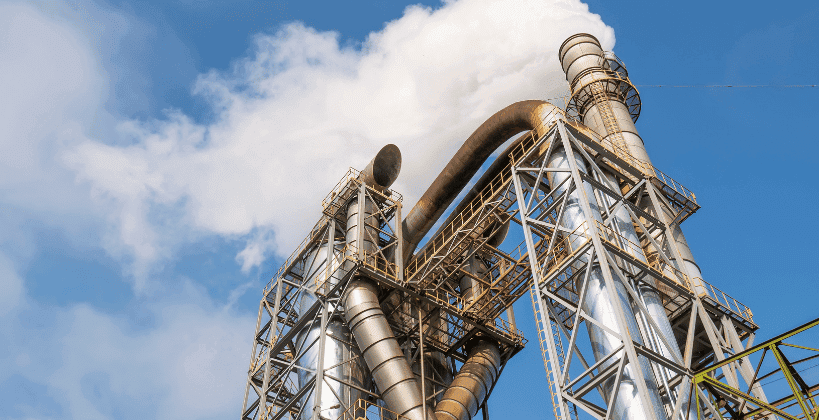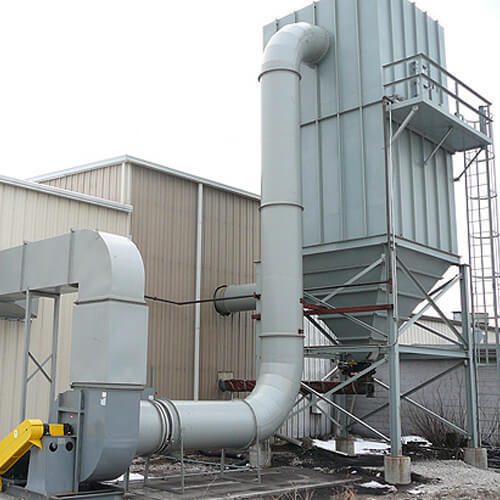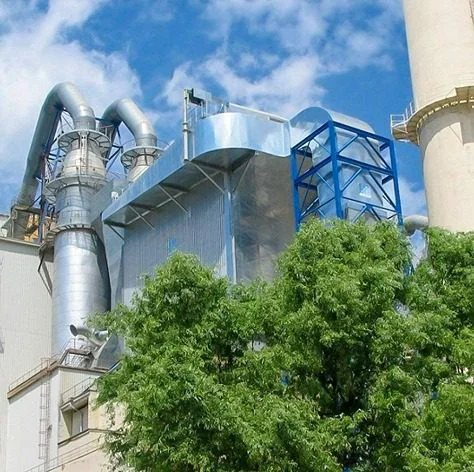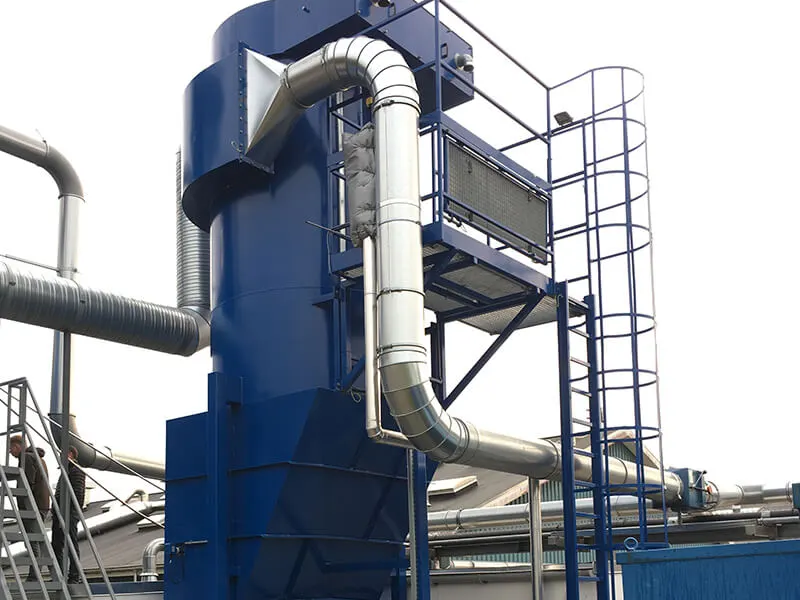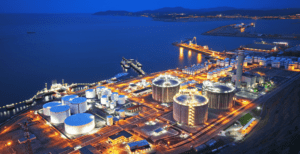As industries continue to scale up operations, the challenges of maintaining air quality have become more urgent than ever. Among the most pressing concerns is the control of particulate matter (PM)—specifically PM2.5 and PM10 emissions—released during high-temperature industrial processes. These tiny particles are not just an environmental issue; they pose serious health risks, can damage machinery, and may even impact product quality.
At Intensiv Filter Himenviro, we’ve been at the forefront of industrial air pollution control, with decades of expertise in designing and delivering advanced filtration systems that operate efficiently in the most demanding conditions. In this blog, we delve into the science, regulatory landscape, and technological solutions to controlling PM emissions in high-heat environments, offering actionable insights for industries striving for both performance and sustainability.
Understanding PM2.5 and PM10: Why It Matters
PM2.5 refers to airborne particles with a diameter of less than 2.5 micrometres, while PM10 encompasses particles smaller than 10 micrometres. These particles can be solid or liquid and often contain toxic materials such as heavy metals, dioxins, and polycyclic aromatic hydrocarbons (PAHs). Due to their small size, PM2.5 particles can penetrate deep into the lungs and even enter the bloodstream, causing respiratory and cardiovascular problems.
Industries that involve high-temperature operations—such as cement manufacturing, metal smelting, glass production, and thermal power generation—are among the major contributors to these emissions. At elevated temperatures, raw materials undergo chemical and physical transformations, releasing volatile substances and fine particles that form PM2.5 and PM10.
Emission Sources in High-Temperature Environments
To control emissions effectively, it’s essential to understand where and how PM is generated. Common emission sources include:
Combustion Chambers: Furnaces, kilns, and boilers release fly ash and fine soot particles.
Paghawak ng Materyal: High-speed transport and crushing of hot materials generate large volumes of PM.
Chemical Reactions: High-temperature oxidation and reduction reactions can emit nano-sized particles.
Cooling Processes: Rapid cooling of hot gases leads to the condensation of metal vapors into fine particulate matter.
What makes high-temperature processes especially challenging is the nature of the PM—often sticky, reactive, and thermally unstable, which makes conventional filtration systems ineffective or even hazardous.
The Regulatory Push: Emission Standards Are Getting Tighter
Global and regional regulations are becoming increasingly stringent, compelling industries to invest in modern air pollution control systems. For instance:
Ang World Health Organization (WHO) recommends annual average PM2.5 levels not exceeding 5 µg/m³
- Ang European Union and United States EPA enforce strict emission limits under their respective industrial emission directives.
- In India, CPCB (Central Pollution Control Board) has introduced updated norms for PM10 and PM2.5, especially targeting thermal power plants, cement units, and metallurgical industries.
Challenges in Capturing PM in High-Temperature Processes
High-temperature environments bring a host of engineering and operational complications:
- Filter Media Degradation: Conventional filter bags and cartridges often cannot withstand high temperatures, leading to reduced efficiency and frequent breakdowns.
- Agglomeration and Sintering: Fine particles tend to fuse together at high temperatures, forming larger, sticky masses that can clog filters and ducts.
- Corrosive Gases: High-temperature processes often release acidic or alkaline gases that degrade filtration systems over time.
- Condensation and Re-entrainment: As gases cool, volatile substances condense and get re-entrained, leading to secondary PM formation downstream.
These challenges necessitate the use of specialized filtration systems designed with high-temperature materials, advanced geometry, and real-time monitoring capabilities.
Tuklasin ang Aming Saklaw ng Mga Solusyon:
Advanced Solutions from Intensiv Filter Himenviro
At Intensiv Filter Himenviro, we approach PM emission control not as a one-size-fits-all solution, but as a custom-engineered integration of technology, design, and application knowledge.
Technologies We Deploy:
- Reverse Air Bag Houses: Ideal for cement kilns and furnaces, our Reverse Air Bag Houses offer continuous filtration even in extreme conditions. They feature temperature-resistant filter bags made of fiberglass or PTFE blends and utilize reverse air for gentle, effective cleaning without damaging the media.
- Hybrid Filters (Electrostatic + Fabric): In processes where high PM loads and sticky particles coexist, hybrid filtration combines the advantages of electrostatic precipitators (ESP) and fabric filters. Coarse particles are removed in the ESP section, while finer PM2.5 and PM10 are captured by the fabric layer.
- High-Temperature ESPs: For applications like metal smelting and power boilers, our high-temperature electrostatic precipitators are equipped with corrosion-resistant electrodes and heat-resistant casings to ensure long service life and consistent performance.
- Intelligent Control Systems: Our filtration units are integrated with sensors and programmable logic controllers (PLCs) that optimize filter cleaning cycles, detect bag failures, and monitor differential pressure in real time.
Key Advantages of Our Filtration Systems
We ensure our systems not only meet the performance standards but also enhance process efficiency:
Designed for temperatures up to 260°C and higher with special materials
Low-pressure drop ensures energy efficiency
Modular and scalable designs for different process capacities
Automation-ready with remote monitoring and diagnostics
Long filter life and reduced maintenance downtime
Choosing the Right Filter: What to Consider
Selecting the ideal emission control solution is about balancing performance, durability, and cost. Here’s what industrial operators should consider:
Nature of the PM: Size, stickiness, chemical composition, and temperature tolerance
Gas Stream Properties: Flow rate, temperature, humidity, and corrosiveness
Operating Environment: Indoor vs. outdoor placement, frequency of shutdowns
Maintenance Preferences: Ease of access, cleaning frequency, and spares availability
Compliance Goals: Immediate targets vs. long-term environmental strategy
Advantages of Intensiv Filter Himenviro Products
Here’s a quick look at what sets our systems apart:
Walang Leakage: Advanced sealing systems ensure zero bypass and maximum capture efficiency.
Walang Lubrication na Kinakailangan: Our rotary components are engineered for dry, low-maintenance operation.
Walang Breakaway Force: High-sensitivity sensors and actuators reduce system lag.
Walang Friction: Fluid-dynamic designs ensure smoother airflow and extended equipment life.
Malawak na Saklaw ng Presyon: Our systems adapt to high and fluctuating process pressures.
Mataas na Lakas: Materials chosen to withstand thermal shock, pressure surges, and chemical attack.
Cost-effective: Optimized lifecycle cost with reduced energy usage and longer filter life.
Simpleng Disenyo: Modular layout ensures ease of installation and fast replacements.
Maraming nalalaman: Works across industries like cement, metal, food, chemical, and waste treatment.
Future Outlook: Where Emission Control is Headed
The future of PM control lies at the intersection of advanced materials, real-time analytics, and predictive maintenance. At Intensiv Filter Himenviro, we’re investing in R&D to explore:
Nanofiber-based filter media that offer ultra-fine filtration without sacrificing airflow
AI-integrated control systems for predictive maintenance and adaptive filtration
Energy recovery mechanisms that harness waste heat from flue gases to improve overall efficiency
Carbon-neutral filtration solutions aligned with net-zero industrial goals
We believe that clean air is not just a regulatory requirement but a competitive advantage—a mark of a modern, responsible, and future-ready enterprise.
Conclusion: Engineering Clean Air for a Better Tomorrow
PM2.5 and PM10 emissions may be invisible to the naked eye, but their impact is far-reaching. High-temperature processes, though essential to modern industry, come with significant environmental responsibilities. With rising regulatory pressure and increasing awareness about health and sustainability, industrial air filtration can no longer be an afterthought.
At Intensiv Filter Himenviro, our mission is to help industries achieve cleaner production without compromising operational performance. Our range of cutting-edge filtration technologies is designed to tackle the toughest challenges—ensuring that businesses stay compliant, efficient, and environmentally responsible.
